The Big Read in short: How wildlife bridges help save Singapore's endangered animals
SINGAPORE — Making a wildlife crossing “animal ready” from day one was no child’s play for a team from the Mandai Wildlife Group (MWG).
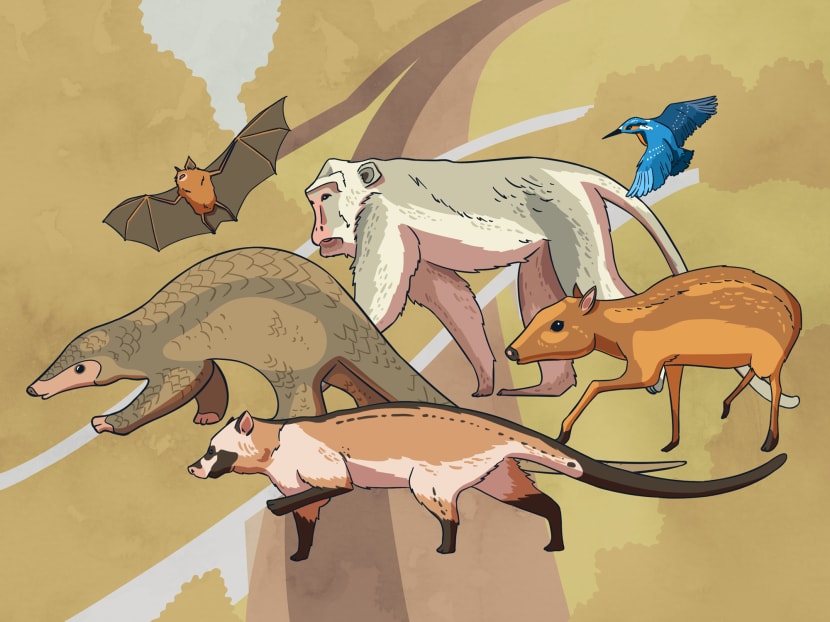
Mandai Lake Road is a common crossing for animals in the adjacent forest patches. They include the long-tailed macaques, wild boars and rarer species such as the sambar deers and Sunda pangolins.
Each week, TODAY’s long-running Big Read series delves into the trends and issues that matter. This week, we look at the work of the team behind the Mandai Wildlife Bridge and overall efforts to preserve Singapore's biodiversity. This is a shortened version of the full feature, which can be found here.
- Even before the Mandai Wildlife Bridge opened in late 2019, the team behind it had been worried that animals would not take to the bridge
- However, a week before the bridge's official opening, long-tailed macaques were already spotted using it. Wild pigs, rare sambar deers followed suit not long after
- Still, roadkill continues to be an issue, with a critically endangered Sunda pangolin found dead in the area last year
- While eco-bridges help, environmental experts stress the need to go beyond remedial solutions to the issue of habitats being destroyed through development works
- Motorists and the general public need to be better educated when it comes to living alongside animals, they say
SINGAPORE — Making a wildlife crossing “animal ready” from day one was no child’s play for a team from the Mandai Wildlife Group (MWG) .
A year before the 2019 opening of the Mandai Wildlife Bridge, which was partly meant to address roadkill, flood lights pointing towards the forest edges along Mandai Lake Road were installed to discourage animals from crossing the road.
The road, which runs from Mandai Road to the Singapore Zoo and cuts through a part of the Central Catchment Nature Reserve, is a common crossing for animals in the adjacent forest patches.
The team also planted the bridge with common tree species found in the area so that animals would be drawn by the familiarity of the vegetation on it several months before its official opening on Dec 6, 2019.
Despite their efforts, the team remained doubtful if animals would use the 140m bridge.
“When we first planted the trees, there were still gaps in between the trees and they hadn’t formed the canopy or looked forest-like. So we thought the animals would be a little bit more wary of such a new landscape,” said Ms Chua Yen Kheng who oversaw the bridge project as Assistant Vice President of Sustainable Solutions at MWG.
However, the animals took to the bridge far quicker than anyone had expected.
Even a week before its official opening, photos from six camera traps set up along the bridge showed that long-tailed macaques were already using the bridge.
And within the first week of its opening, larger mammals like wild pigs and sambar deers were spotted using the bridge.
“We were searching online for things that would encourage the animals to use the bridge but upon seeing the footage – we were like, ‘Eh, wah! They started to use the bridge so early!Mr Lim Zongxian, a wildlife management officer with Mandai Wildlife Group”
Spotting these animals in photos from the camera traps brought relief to the team, said Mr Lim Zongxian, a wildlife management officer with MWG.
“We were searching online for things that would encourage the animals to use the bridge but upon seeing the footage – we were like, ‘Eh, wah! They started to use the bridge so early!’”
Two years on, nearly 70 species of wildlife have been spotted using the animal-only bridge located near the Singapore Zoo, said the wildlife group in an update earlier this month.
Besides the sambar deer, which was estimated in 2010 to number fewer than 20 in Singapore, Sunda scops owl, common-palm civet, the large-tailed nightjar (a bird), and the lesser short-nosed fruit bat have also been captured on the camera traps.
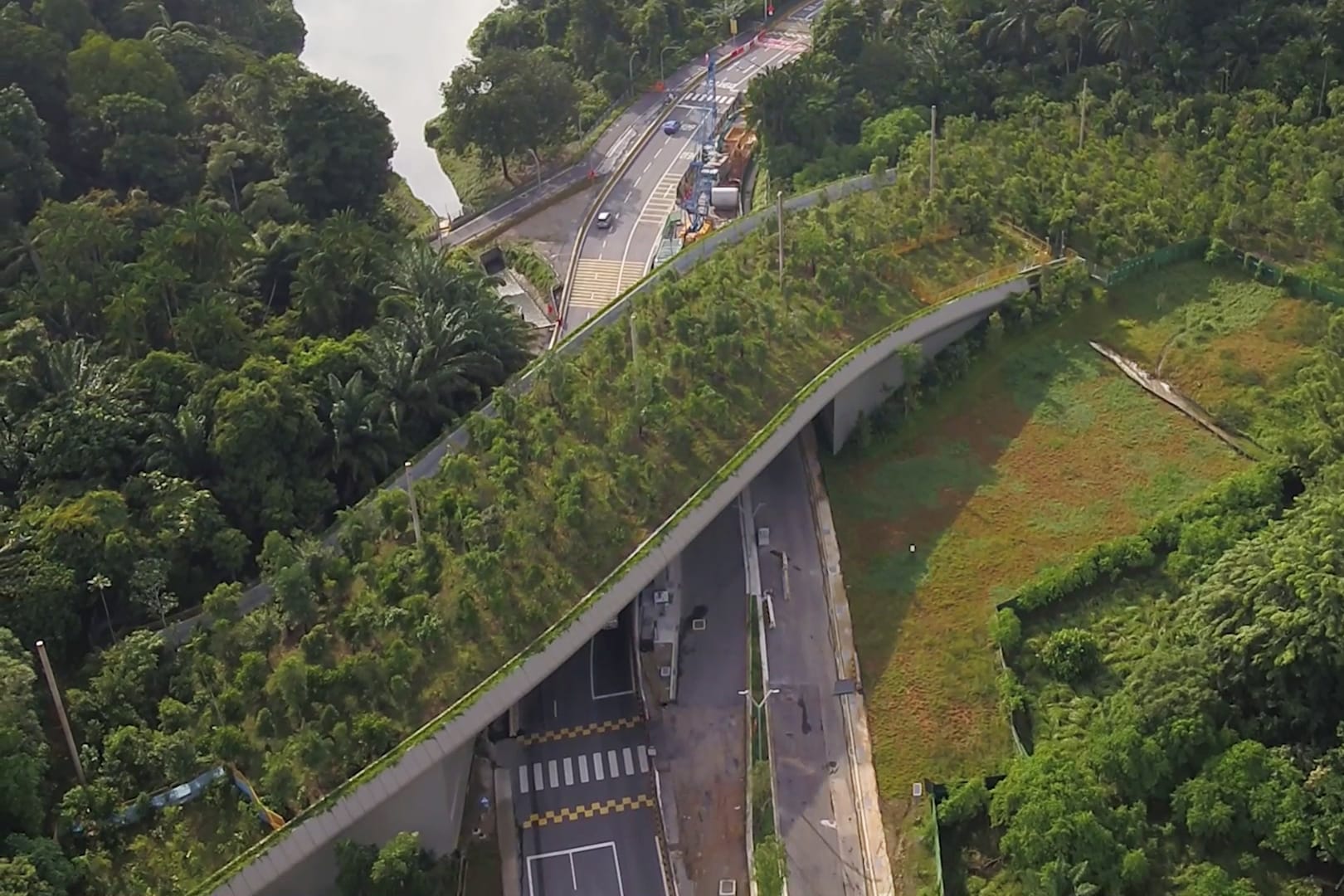
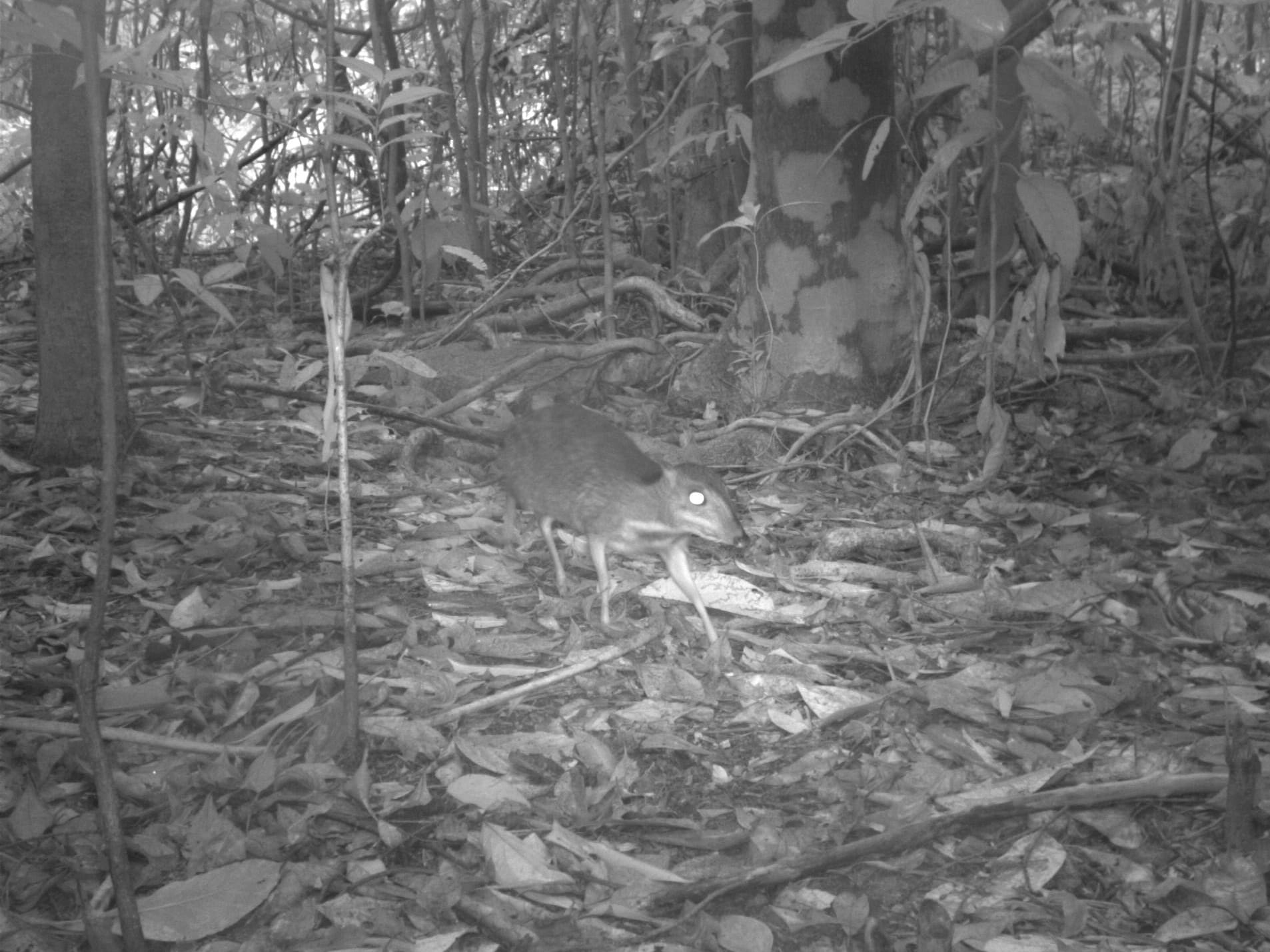
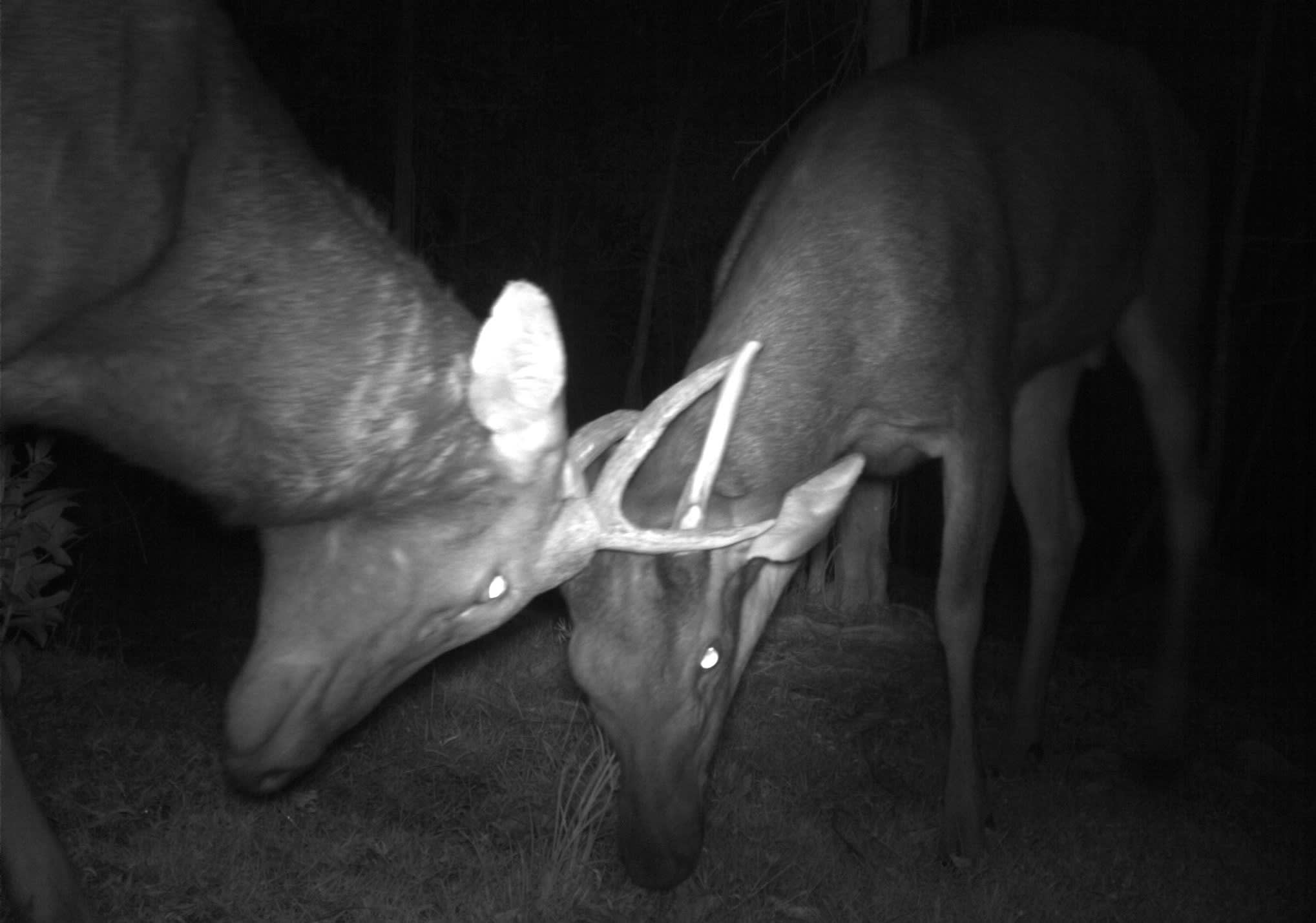

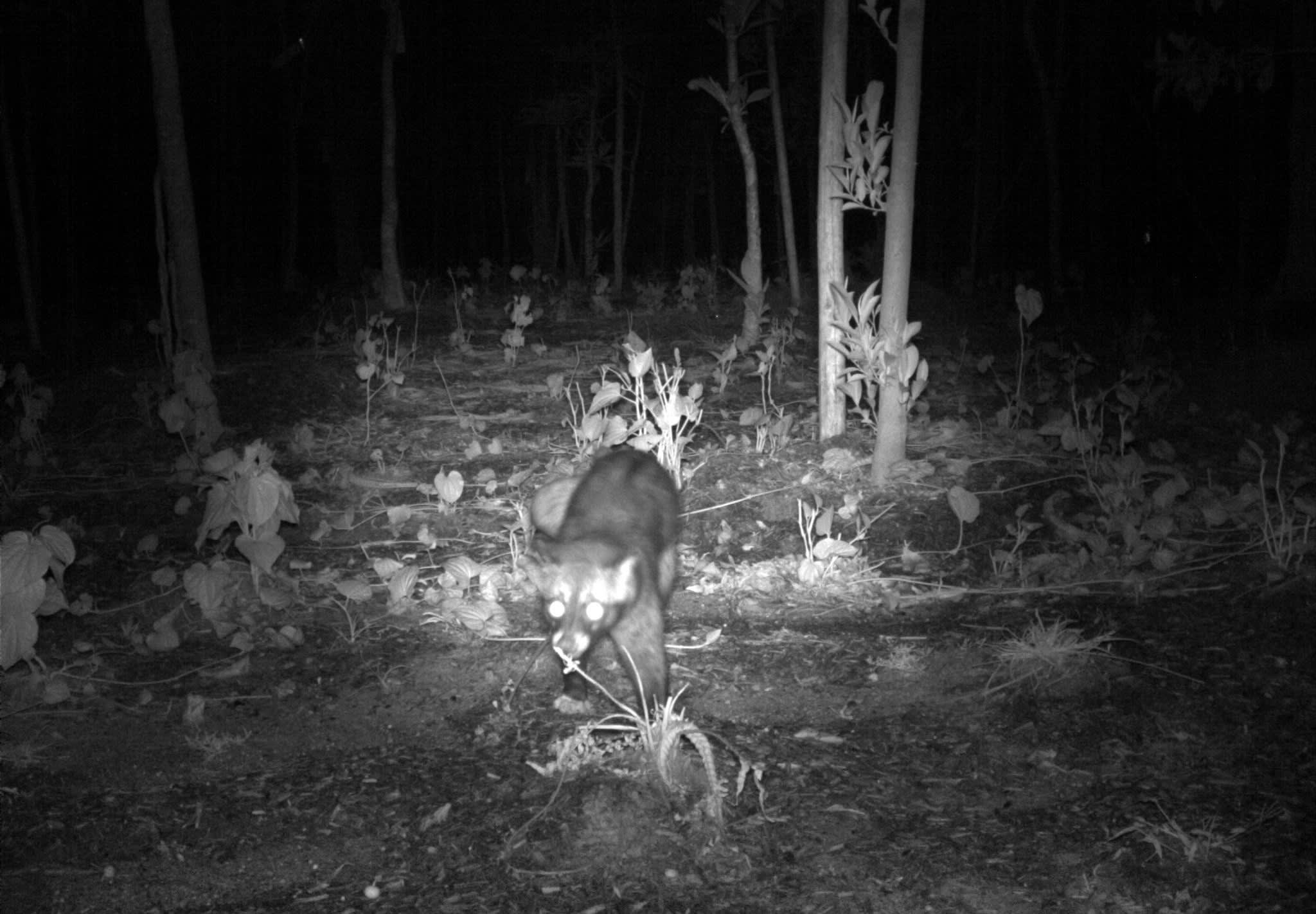

Occasionally, a less welcomed species has been spotted on the bridge: Humans.
Ms Chua, 46, said that the team has detected "a few" occurrences of trespassing in mid-2020, with members of public likely to have strayed from nearby publicly accessible trails.
Once such instances were detected, the team conducted checks at the bridge's potential entry points and locks on its gates were replaced with studier ones as precaution. Signs were also put up to alert trespassers.
A TASK 'BOTH BORING AND EXCITING'
The job of monitoring the bridge and the buffer areas leading to the Central Catchment Nature Reserve on both sides of the road is “both boring and exciting”, said Mr Lim, 30.
His job involves scouring through about 30,000 to 50,000 photos a year to identify and record details of the animals in pictures.
Processing the data from the photos, which are taken by more than 40 camera traps placed on the bridge and the buffer zone, can take up to 900 working hours a year, he said.
While trawling through the photos can be boring, there is a sense of excitement when they offer glimpses of interesting behaviour by the animals.
These include watching small mousedeer munching on African tulips a third of their size near the bridge, and watching “very cute and small” Bambi-like baby fawns grow up over months through the photos, said Mr Lim.
While the bridge has become a common crossing for some animals, the team is still waiting with bated breath for their next milestone — the crossing of the critically endangered Sunda pangolin and lesser mousedeer.
The team has placed log piles along the bridge in the hope that they will draw these “shyer” animals to step foot.
The log piles will serve as stepping stones or shelter for these animals when they navigate the bridge, said Mr Lim.

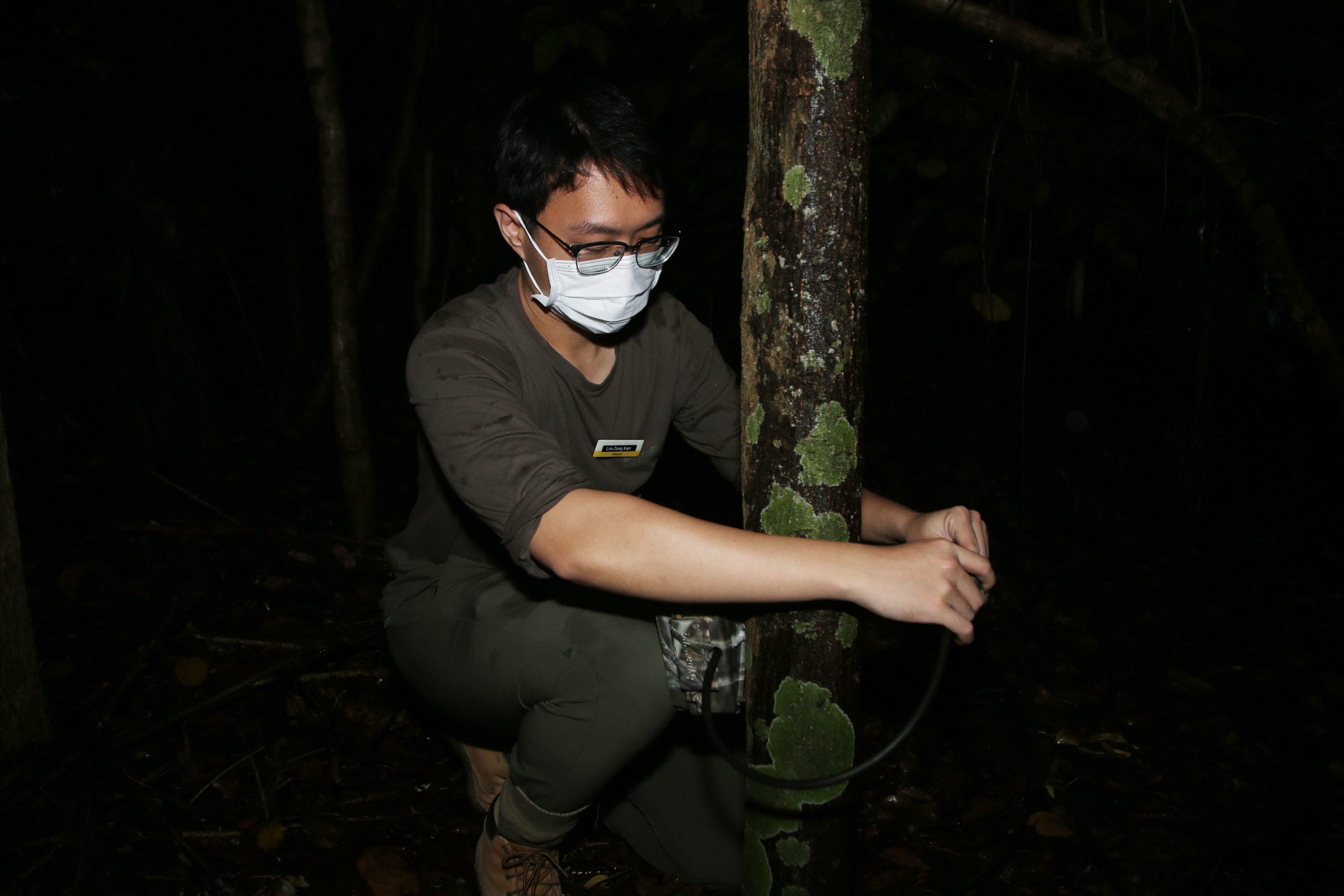
BRINGING FORESTS TOGETHER
Ecological bridges (eco-bridges) such as the one in Mandai help to reconnect patches of forest that have been spliced by development and more than 9,000 land-km of roads in highly urbanised Singapore.
Apart from providing animals with safe passage, such bridges also allow them to forage for food and expand their genetic pool by finding mates from different locations.
The first such bridge here is the 62-m long Eco-Link@BKE.
Opened in 2013 and managed by the National Parks Board (NParks), the Eco-Link@BKE connects Bukit Timah Nature Reserve and Central Catchment Nature Reserve over the Bukit Timah Expressway (BKE).
In response to TODAY’s queries, NParks said that since its completion, populations of various native animals have been recorded on Eco-Link@BKE.
They include the Slender squirrel, Sunda pangolin, lesser mousedeer and Changeable Hawk-Eagle.
“Apart from setting up more eco-bridges, the nature groups also suggested exploring other types of linkages to aid animals, such as culverts for underground connectivity, rope bridges for primates and land bridges for land crossings.”
WHAT NATURE GROUPS SAY
While members of the nature community have welcomed the addition of the Mandai bridge, they called for more studies to evaluate its long-term effectiveness.
“It’s positive that animals are using the bridge. That’s definitely beyond question,” said Ms Anbarasi Boopal, the co-chief executive officer of Animal Concerns Research and Education Society (Acres).
Apart from setting up more eco-bridges, nature groups also suggested exploring other types of linkages to aid animals, such as culverts for underground connectivity, rope bridges for primates and land bridges for land crossings.
NParks said that it has installed underground culverts in areas such as Old Upper Thomson Road for small mammals, such as pangolins and porcupines, and larger mammals like the lesser mousedeer.
The agency has also installed aerial rope bridges across carriageways to facilitate the safe movement of tree-residing animals, such as the Raffles’ banded langurs.
Nature groups which spoke to TODAY reiterated the need to enhance connectivity between more green patches through eco-links including bridges.
Dr Ho Hua Chew of Nature Society (Singapore) flagged several areas requiring eco-bridges: These include across Upper Thomson Road, between Thomson Nature Park and the forest patch north of Tagore Drive, and also across Mandai Road between the Central Catchment Nature Reserve and its sliced-off patch to the north of the road.
He also recommended that two major eco-links be installed, with one at the Kranji Expressway between Tengah forest and the areas around Old Chua Chu Kang Road and another linking up Tengah forest to Bukit Gombak across two roads there.
These links would facilitate the dispersal of wildlife along the planned Tengah Nature Way between the Western Water Catchment area and Bukit Timah Nature Reserve.
REDUCING ROADKILL
Despite the advantages of eco-bridges, they are not foolproof in eliminating roadkill.
Ms Chua of MWG recalled how the team was disappointed to learn that a Sunda pangolin had ended up as roadkill along Mandai Lake Road last March.
“It was quite upsetting because it was one year after the bridge was set up. We had been anticipating for the Sunda pangolin to cross the bridge but then, it appeared on the road,” she said.
Even before the eco-bridge opened, MWG had put up fencing along Mandai Lake Road and closed the road to motorists from 1.30am to 6am daily to reduce roadkill. Speed humps, signages and rope bridges for long-tailed macaques and squirrels to use were also installed.
Despite such efforts, seven roadkill incidents were reported between January 2020 and December 2021 within 500m of Mandai Road, which lies about 350 north of the bridge.
Besides the pangolin, other animals that died included the Malayan colugo, the long-tailed macaque, wild pig, red-tailed pipe snake, the Asian house rat and Javan myna.
NParks told TODAY that through its feedback system, it has recorded an average of three roadkill incidents per month islandwide in the past six months. The incidents involved wildlife such as macaques and wild boars.
Specific to the area around Eco-Link@BKE, the statutory board had registered pangolin roadkill of an average of about two per year from 1994 to March 2014, to just one between April 2014 and January 2022.
It has also recorded an average of one roadkill incident involving other wildlife, such as macaques and wild boars, around the area between 2015 and 2022.

Statistics compiled by Acres, on the other hand, showed a steady increase in animals that had died at the hands of motorists in the last five years islandwide.
According to its figures, the number of roadkill more than doubled, from 93 in 2016 to 194 in 2021.
Ms Anbarasi said that the increase could partly be due to the fact that Acres has been including roadkill reported by others in the nature community from 2020, on top of calls to its hotlines as well as greater awareness among the public that led them to report such incidents.
Moreover, initiatives to green Singapore, such as tree-planting, building of nature trails and park connectors had brought animals into greater contact with people, putting animals at greater risk of becoming roadkill, she said.
Common hotspots flagged by the nature community include areas flanked by forested areas such as Rifle Range Road, Upper Thomson Road, BKE, Mandai Road, Mandai Lake Road, Dairy Farm Road, Neo Tiew Road, Lim Chu Kang Road and Jalan Bahar Road.
Among the more prominent deaths that have hit the news include the death of a leopard cat in 2018 in Mandai. There are fewer than 50 of these cats left in Singapore and its surrounding islands, with less than than 20 on the mainland.
A deer had also died after colliding with a motorcyclist along Mandai Road the same year.
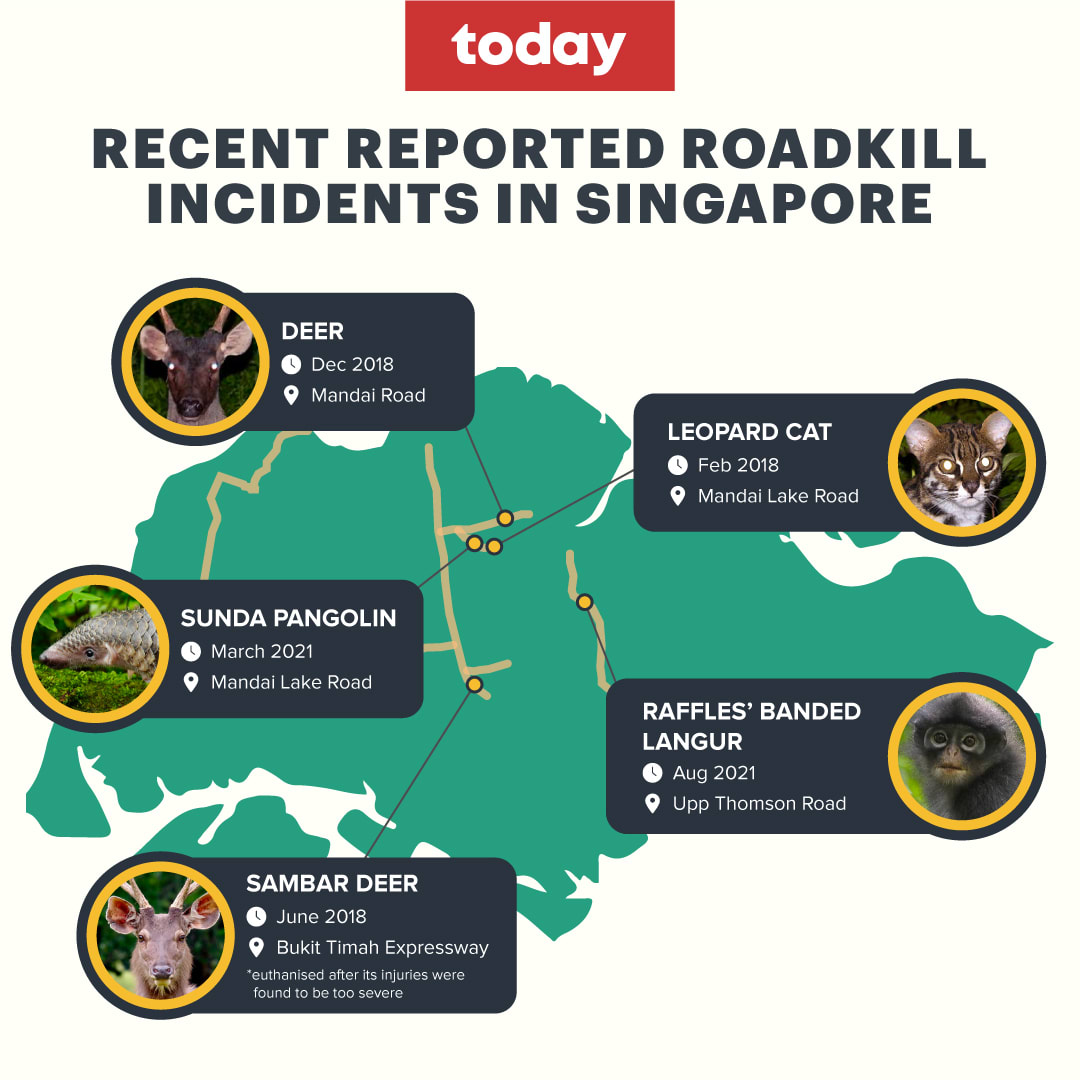
“(People) drive fast both on highways as well as on narrow roads. They just have to stop driving fast if they are near a nature reserve.Dr Vilma D'Rozario, co-director of the Singapore Wildcat Action Group”
EDUCATING MOTORISTS
A common problem pointed out by nature groups is the lack of education among motorists themselves, who are not mindful of the need to slow down when driving into areas with wildlife.
“People drive fast, and they drive fast both on highways as well as on narrow roads. They just have to stop driving fast if they are near a nature reserve,” said Dr Vilma D'Rozario, the co-director of the Singapore Wildcat Action Group.
She recommended that speed limits be lowered at roadkill hotspots. For instance, the speed limit at Rifle Range Road could be reduced to 20km per hour, below the current default of 50km per hour, she said.
GOING BEYOND REMEDIAL MEASURES
Ultimately, environmentalists stressed the need to go beyond remedial measures.
Said Dr Ho of Nature Society: “More and more developments are going on and gaps are increasing. In a way, we are playing catch up, but we are lagging far behind to fill the existing gaps and more gaps keep coming up.”
To sustain Singapore’s biodiversity, it will have to preserve existing stretches, belts and patches of forests that are left, said Dr Ho.
Ms Anbarasi of Acres noted that efforts by the authorities to attract wildlife here have paid off. For instance, hornbills have repopulated Singapore with help from conservation efforts by NParks, and wild animals such as otters are adapting to the urban habitat.
But while Singapore has been successful in attracting nature, there is still “a long way to go” before Singaporeans learn to coexist with nature, she said.
Striking a hopeful tone, Dr Andie Ang, president of the Jane Goodall Institute (Singapore), said that with more people being exposed to Singapore’s biodiversity during the Covid-19 pandemic, public sentiment has become more positive towards the country’s natural heritage and people are more engaged in discourse about the environment.
“Wild pigs and monkeys are part of nature and our ecosystem, just like pangolins and otters are.Dr Andie Ang, president of the Jane Goodall Institute (Singapore)”
She cited how public consultation had contributed to the development plans for Dover forest last year.
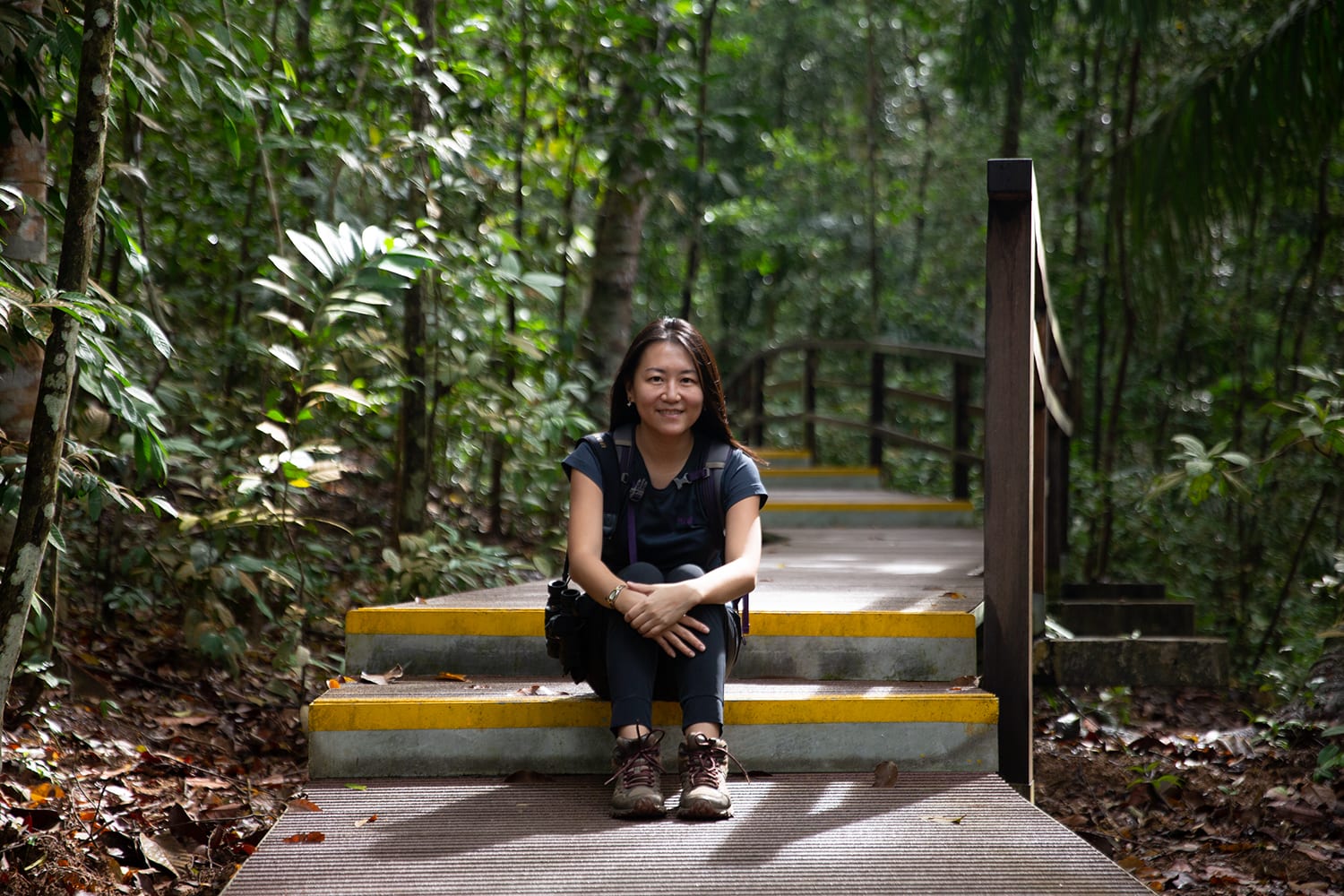
The Government had announced last July that part of the forest would be set aside for housing and another for a nature park following public outcry over the forest being earmarked for residential development.
However, public interest in wildlife remained selective, said Dr Ang.
“Wild pigs and monkeys are part of nature and our ecosystem, just like pangolins and otters are,” she said.
To be a biophilic state, where people have a deep-rooted sense of respect, appreciation and love for nature, people will “need to know what nature is, and understand nature as it is”.
Different people and different sectors have a role to play in shaping public education and helping Singapore, which has long strived to blend nature with urban living, to become a biophilic state.
She said: “It is still a distance, but we are getting there.”











